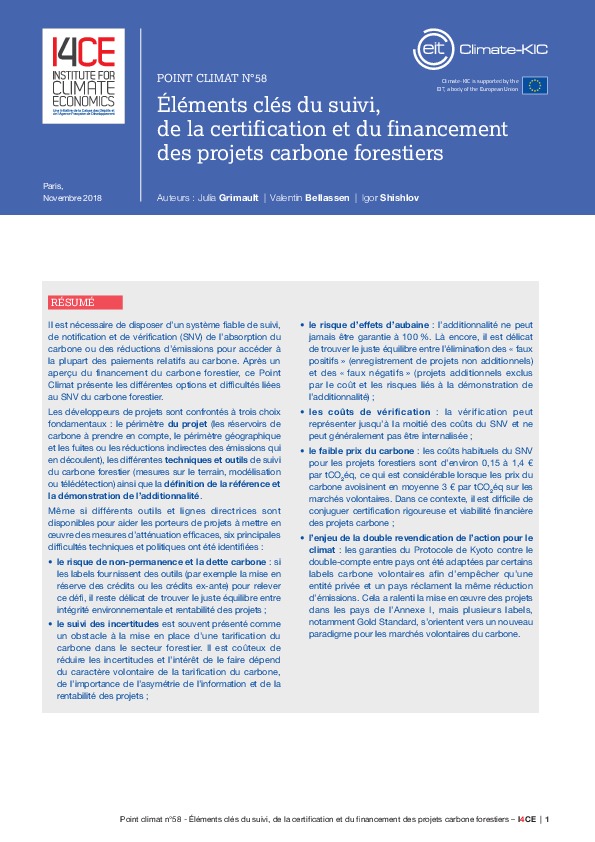Key elements and challenges in monitoring, certifying and financing forestry carbon projects
The amount of finance for forest carbon projects has never been as high as in 2015 when it reached USD 888 million (Goldstein & Ruef, 2016). In most cases, a reliable monitoring, reporting and verification (MRV) of carbon removals or emissions reductions is necessary to access most carbon payments.
After an overview of forest carbon finance, this Climate Brief presents the different options and challenges associated with forest carbon MRV.
First, projects developers face three key choices:
- The definition of th project scope (carbon pools to be considered, geographical perimeter and the related leakages),
- The different techniques and tools for forest carbon monitoring (field measurements, modeling or) remote sensing)
- The baseline definition and additionality demonstration.
Despite the different tools and guidelines available to help projects developers trigger impactful mitigation action, six main technical and political challenges are identified:
- The non-permanence risk and carbon debt: while standards provide tools (eg. buffer account, ex-ante credits) to deal with this challenge, finding the right balance between environmental integrity and project profitability remains delicate.
- Monitoring uncertainty is often put forward as a barrier to the implementation of carbon pricing in the forestry sector. Reduce uncertainty is costly and the interest of doing so depends on whether carbon pricing is voluntary, on the importance of information asymmetry and on projects profitability.
- The risk of windfall effects: additionnality can never 100% guaranteed. There again, striking the right balance between avoiding both the “false positives” (non-additional projects getting registered) and the “false negatives” (additional projects that are shut out by the cost and risk of the additionnality demonstration) is delicate.
- Verification costs: verification can weight up to half the MRV costs and cannot usually be internalized.
- Low carbon prices: typical MRV costs for forestry projects are around 0.15-1.4 € per tCO2e which is substantial when carbon prices average around 3 € per tCO2e on voluntary markets. How to combine a robust certification with the financial viability of carbon projects in this context is challenging.
- The double-claiming of climate action issue: the Kyoto Protocol safeguards against double-counting between countries have been adapted by some voluntary carbon standards to prevent that a private entity and a country claim the same emission reduction. This has slowed down projects implementation in Annex I countries, but several standards, including the Gold Standard, are moving towards a new paradigm for voluntary carbon markets.

